Our first day in Boston might have fed my husband's love of revolutionary war history, but our second revolved around some of my favorite indulgences. A treasure trove of fine art and architecture to be oohed and aahed over lay ahead, and I could not wait to get started.
Legging it across Boston's tranquil Public Garden on the way to our first port of call, we happened upon the city's famed fleet of pleasure boats.
After sauntering past several wonderfully preserved picturesque streets on Beacon Hill, lined with handsome eighteenth and early-nineteenth century brick houses, and crossing into the West End neighborhood, we finally arrive at our destination.
Built in 1796 for Harrison Gray Otis, the Otis House is a grand Federal-era house that has been on my 'Must See' list for a number of years. The house, by the way, did not always look so grand.
Here I was, at last, standing in a most impressively scaled hallway, absorbing the fine detail of architect Charles Bulfinch's work. It is hard to imagine that this house almost met with the wrecker's ball when everything else around it was being demolished to make way for "improvements" to the neighborhood.
The dining room, seen below, perfectly illustrates the Federal-era's love of vibrant color. This room has been accurately restored using research garnered from chemical paint analysis. Is anyone, I wonder, as bold today in their choice of paint colors?
Visitors to Boston who have an interest in historic houses should certainly take the time to view this one. I would, however, strongly advise you check the Otis House website when planning your visit as the house is not open daily. One would hate to be met by a locked door and forfeit an opportunity of viewing the splendors of this fine Federal-era house.
Well, that was all so enjoyable but it was barely lunchtime. We were only half way through our day exploring Boston's first-rate cultural treasures. Hopping into a nearby taxi, we were soon deposited alongside the towering USS Constitution, the world's oldest commissioned warship still afloat (HMS Victory, which I visited several years ago, is technically older but is now permanently in dry dock preserved as a museum).
The related museum across the way was filled to overflowing with interesting artifacts and information related to the ship. While my husband brushed up on his naval history, I distracted myself with this pair of covet-worthy porcelain urns.
Legging it across Boston's tranquil Public Garden on the way to our first port of call, we happened upon the city's famed fleet of pleasure boats.
The Swan Boats have been a delightful fixture on the Public Garden's pond since 1877
Photo: Chronica Domus
After sauntering past several wonderfully preserved picturesque streets on Beacon Hill, lined with handsome eighteenth and early-nineteenth century brick houses, and crossing into the West End neighborhood, we finally arrive at our destination.
Otis House
Photo: Chronica Domus
Built in 1796 for Harrison Gray Otis, the Otis House is a grand Federal-era house that has been on my 'Must See' list for a number of years. The house, by the way, did not always look so grand.
Almost unrecognizable, Otis House has endured a number of calamitous alterations throughout its history including the removal of its marvelous fanlight and Palladian window, and the addition of shopfronts lining its facade
Here I was, at last, standing in a most impressively scaled hallway, absorbing the fine detail of architect Charles Bulfinch's work. It is hard to imagine that this house almost met with the wrecker's ball when everything else around it was being demolished to make way for "improvements" to the neighborhood.
The grand scale of the hallway - which can only be realized when standing within it - is no
accident having been designed to impress all who cross its threshold
accident having been designed to impress all who cross its threshold
Photo: Chronica Domus
In 1916, William Sumner Appleton purchased the house and began work to raise the funds to meticulously restore it. Part of that restoration work included moving the house off its foundation and setting it back from Cambridge Street which was slated to be widened by the city in 1920.
There's much to be admired in the gentle color scheme and restrained furnishings of the hallway which stand in stark contrast to the vivid colors and sumptuous decoration of the principal rooms
Photo: Chronica Domus
I was rather taken by the elegant simplicity of the glass hall lantern which hangs from a
hook and is illuminated by a lone wax candle
Photo: Chronica Domus
The view from the landing
Photo: Chronica Domus
The shutters of the restored Palladian window
Photo: Chronica Domus
The dining room, seen below, perfectly illustrates the Federal-era's love of vibrant color. This room has been accurately restored using research garnered from chemical paint analysis. Is anyone, I wonder, as bold today in their choice of paint colors?
The Otis' dining room has been decorated as it looked when the family lived there - note
the green crumb cloth, placed beneath the dining table to protect the costly carpet from errant
morsels which might stray from the mouths of sloppy diners
Photo: Chronica Domus
Obviously I need to get with the program and add a similarly useful and beautiful
tole bottle cooler to my own humble dining room
Photo: Chronica Domus
A cozy spot for taking tea in the drawing room
Photo: Chronica Domus
This Federal-era brass curtain tie back, employed in the bedchamber, looks particularly
fetching against yellow silk and soft green paint
fetching against yellow silk and soft green paint
Photo: Chronica Domus
With all the sumptuous distractions of the interior of Otis House, it would be easy to miss the views from any one of the handsome sash windows. When I took a peek, the nearby Old West Church, built in 1806, was revealed.
A most agreeable view
Photo: Chronica Domus
The room below may not be the most opulently decorated room in the house, but it was my favorite. The restful colors and spare decoration are a pleasing juxtaposition to the high drama created by the color and pattern choices within the principal rooms. The graphic wallpaper pattern, authentic to the period, would not look so out of place in a modern setting.
No wonder this room housed Harrison Gray Otis' office; the soothing colors are
certainly conducive to study
Photo: Chronica Domus
I loved this ceramic bough pot which rests upon the room's mantelshelf and was
designed to sit flush against the wall
Photo: Chronica Domus
Visitors to Boston who have an interest in historic houses should certainly take the time to view this one. I would, however, strongly advise you check the Otis House website when planning your visit as the house is not open daily. One would hate to be met by a locked door and forfeit an opportunity of viewing the splendors of this fine Federal-era house.
Otis House's handsome front door lock
Photo: Chronica Domus
Well, that was all so enjoyable but it was barely lunchtime. We were only half way through our day exploring Boston's first-rate cultural treasures. Hopping into a nearby taxi, we were soon deposited alongside the towering USS Constitution, the world's oldest commissioned warship still afloat (HMS Victory, which I visited several years ago, is technically older but is now permanently in dry dock preserved as a museum).
We had a rare glimpse of 'Old Ironsides' in its entirety as it sat in dry dock
undergoing restoration work to its hull (remember to bring your official photo I.D. with
you if you too wish to hop aboard for a tour given by active duty U.S. Navy sailors)
Photo: Chronica Domus
Commodore Isaac Hull who served aboard the USS Constitution during
the war of 1812 graces this rather striking porcelain urn
Photo: Chronica Domus
Dashing Naval Commander. Oliver Hazard Perry, appears
upon a second dreamy urn
Photo: Chronica Domus
Another taxi ride soon had us at the doors of our final destination, the Museum of Fine Arts.
Photo: Chronica Domus
I could barely contain my excitement at the prospect of spending a pleasurable afternoon visiting one of the world's most comprehensive fine arts museums. Aside from the phenomenal works on display - which I'll return to shortly - the museum building itself manages to successfully combine traditional Beaux-Arts architecture with modern additions.
My photograph of the museum's dome, decorated with John Singer Sargent murals, does
this stunning space little justice
Photo: Chronica Domus
The modern glass atrium is home to Dale Chihuly's 42 foot Lime Green Icicle Tower
Photo: Chronica Domus
As predicted, it did not take long before the oohing and aahing began. Barely stepping foot into the corridor headed in the direction of the Americas Wing, I was stopped in my tracks by this elegant musician...
Joseph Dominique Fabry Garat Playing a Lyre Guitar by Adèle Romany, circa 1808
Photo: Chronica Domus
and his lady companion...
Portrait of a Lady at a Pianoforte by Adèle Romany, circa 1808
Photo: Chronica Domus
Once in the Americas Wing the oohing and aahing intensified as we walked by such jewels as this:
Watson and the Shark by John Singleton Copley
Photo: Chronica Domus
and, this:
John Singleton Copley's portrait of John Quincy Adams, painted in London in 1796
Photo: Chronica Domus
John Singleton Copley (1738 - 1815) was Boston's most prolific and talented artist. We viewed close to forty of his works which were nothing short of magnificent. Displayed alongside the paintings are silver, ceramics, and furniture of the period. Other galleries showcased works by Gilbert Stuart (1755 - 1828) whose unfinished George Washington portrait is recognizable to anyone looking at a one dollar note, and Thomas Sully (1783 - 1872) whose monumental work 'The Passage of The Delaware' dominates the gallery in which it hangs. What a remarkable treasure trove of jewels!
A respite from the dizzying array of art was soon in order so we headed upstairs to the marvelous Bravo restaurant to refuel on delicious seasonal fare.
The sophisticated and soothing environment of Bravo restaurant was just the ticket for
exhausted and hungry art enthusiasts
Photo: Chronica Domus
After dinner, we made our way back downstairs to the Americas Wing to finish viewing the satellite rooms off the main galleries. These were filled with fine furniture and decorations of the late-eighteenth and early-nineteenth centuries.
The dining room, parlor, and bedchamber - complete with contents - of Oak Hill, a house built by renowned carver and builder Samuel McIntire, is set up much like it was when it was built in 1801
Photo: Chronica Domus
After a trek through the Art of The Ancient World wing where Patience's fascination with Egyptology was satiated, and a quick gander at the Greek and Roman treasures, we called it a day. It was, after all 10 p.m., time for the museum to close its doors.
Walking back to our hotel, thoroughly exhausted but buoyed from our jam-packed day of cultural pursuits, we all agreed that Boston is indeed an exemplary city full of extraordinary treasures. How very fortunate are its fair citizens and visitors alike.







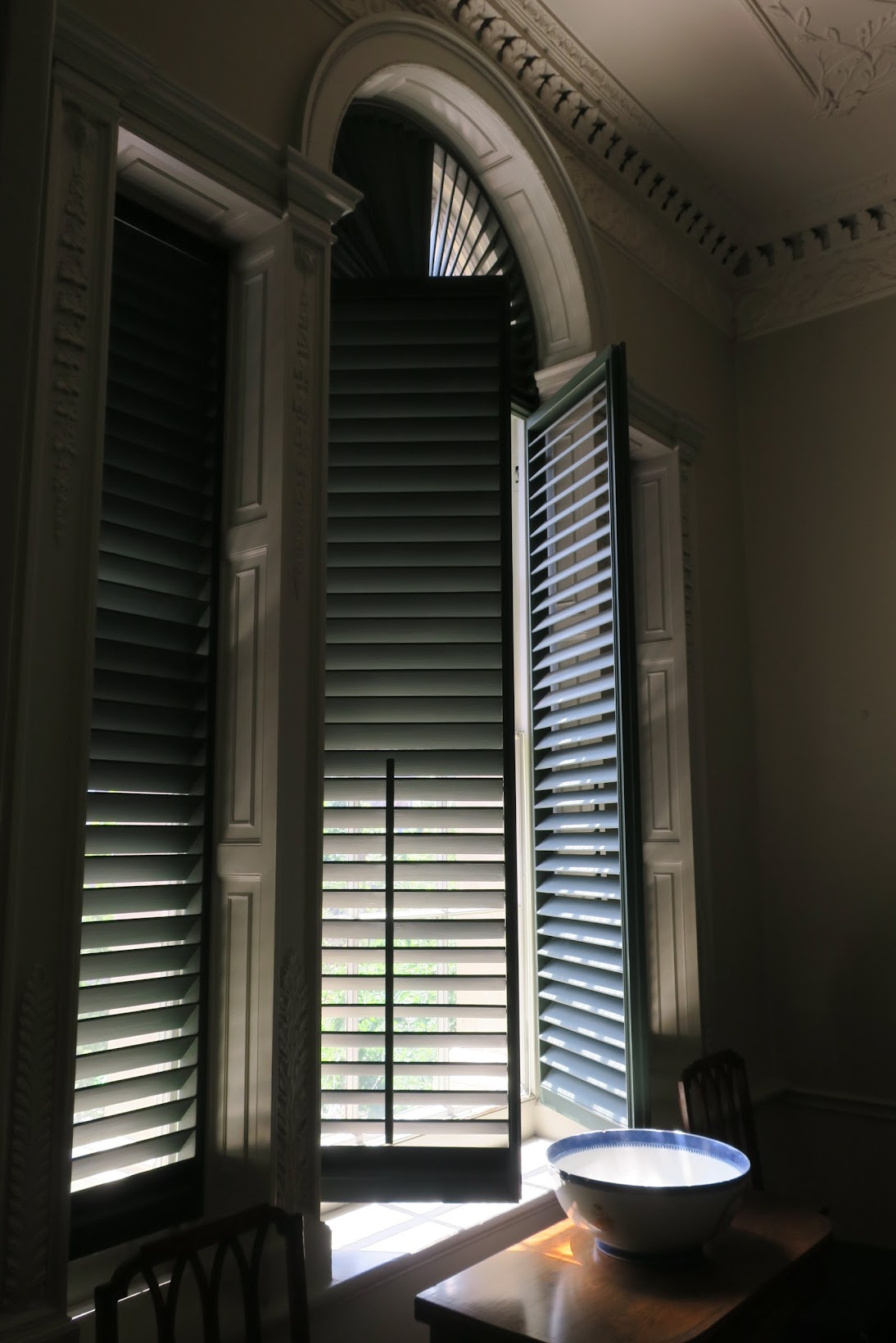



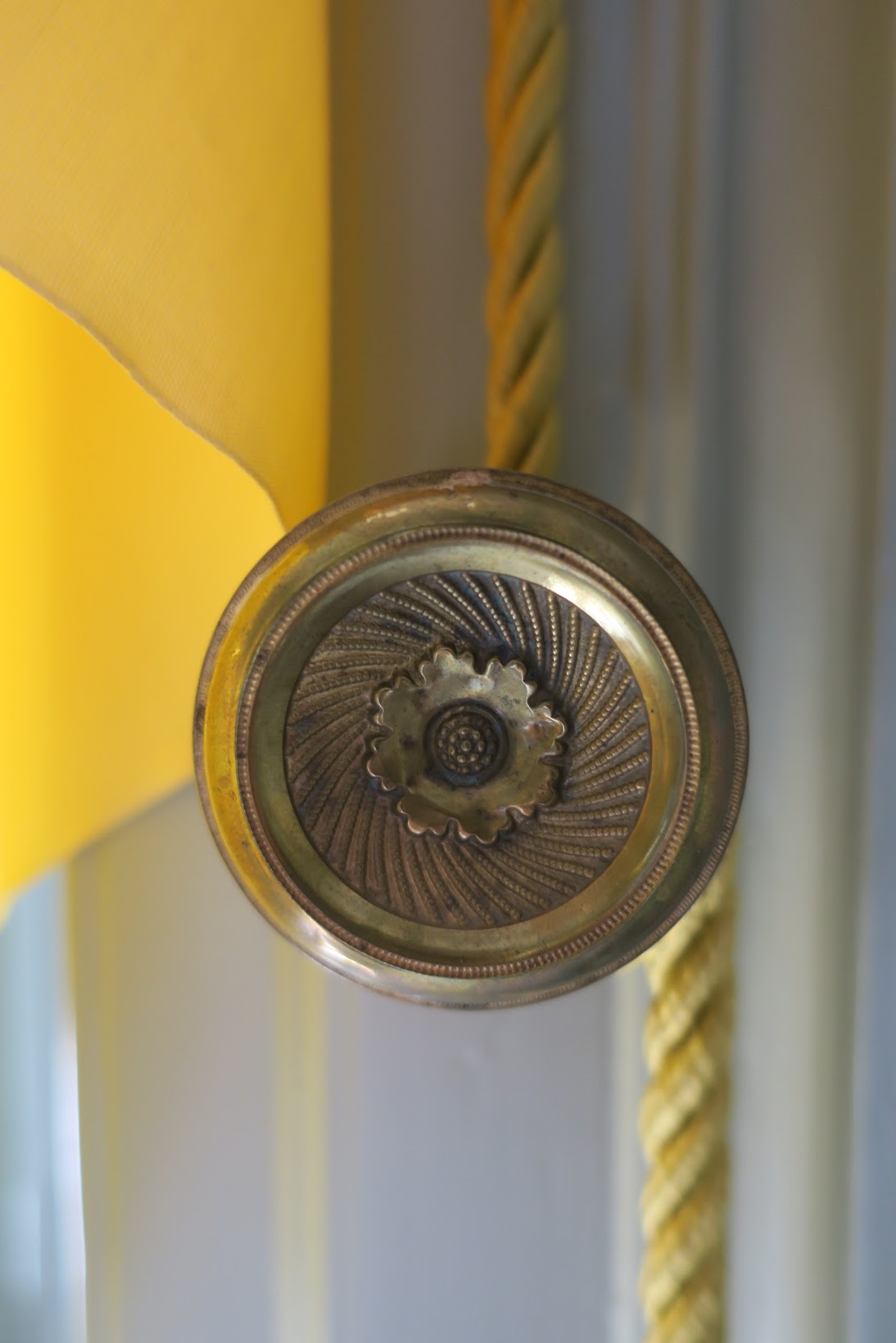
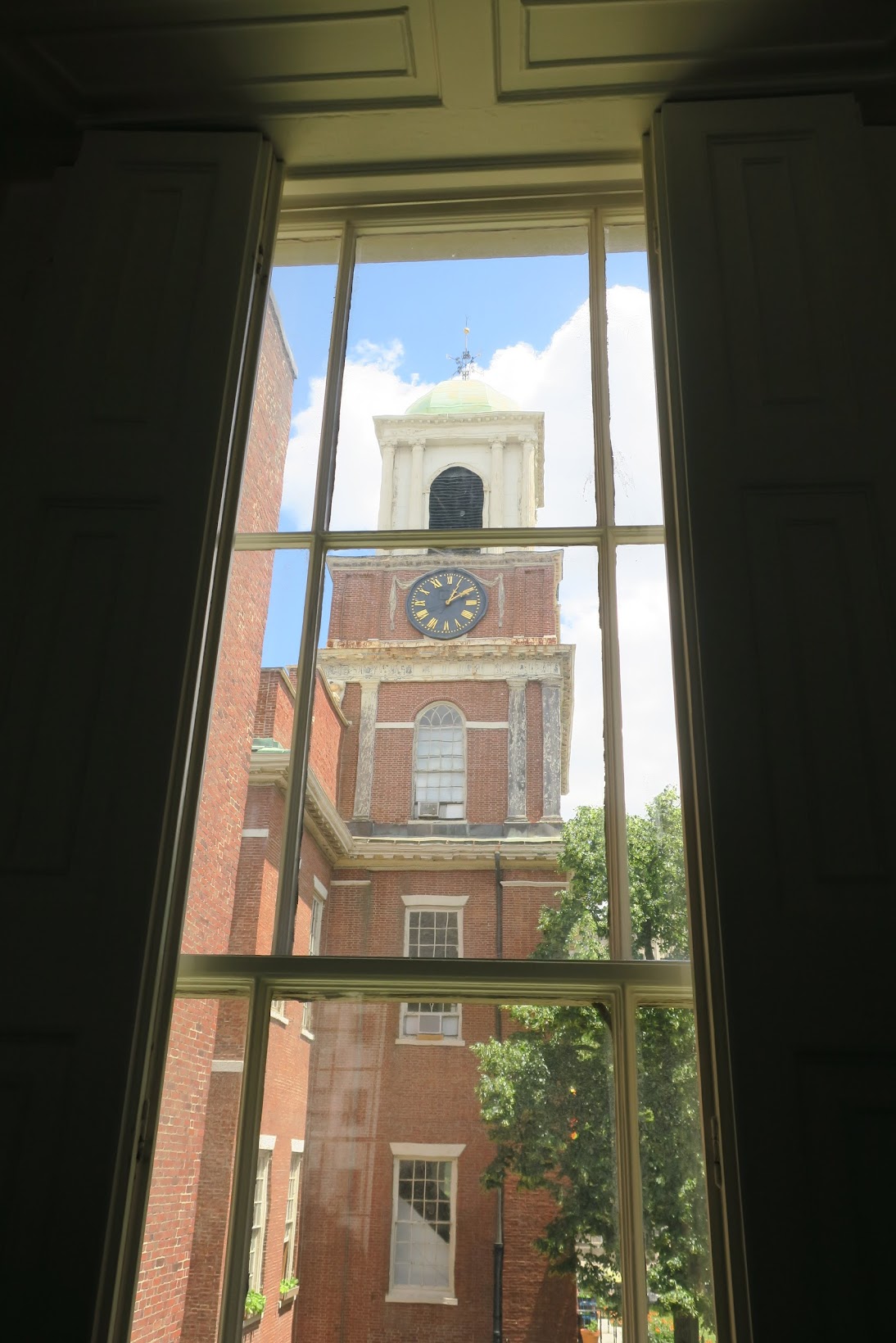




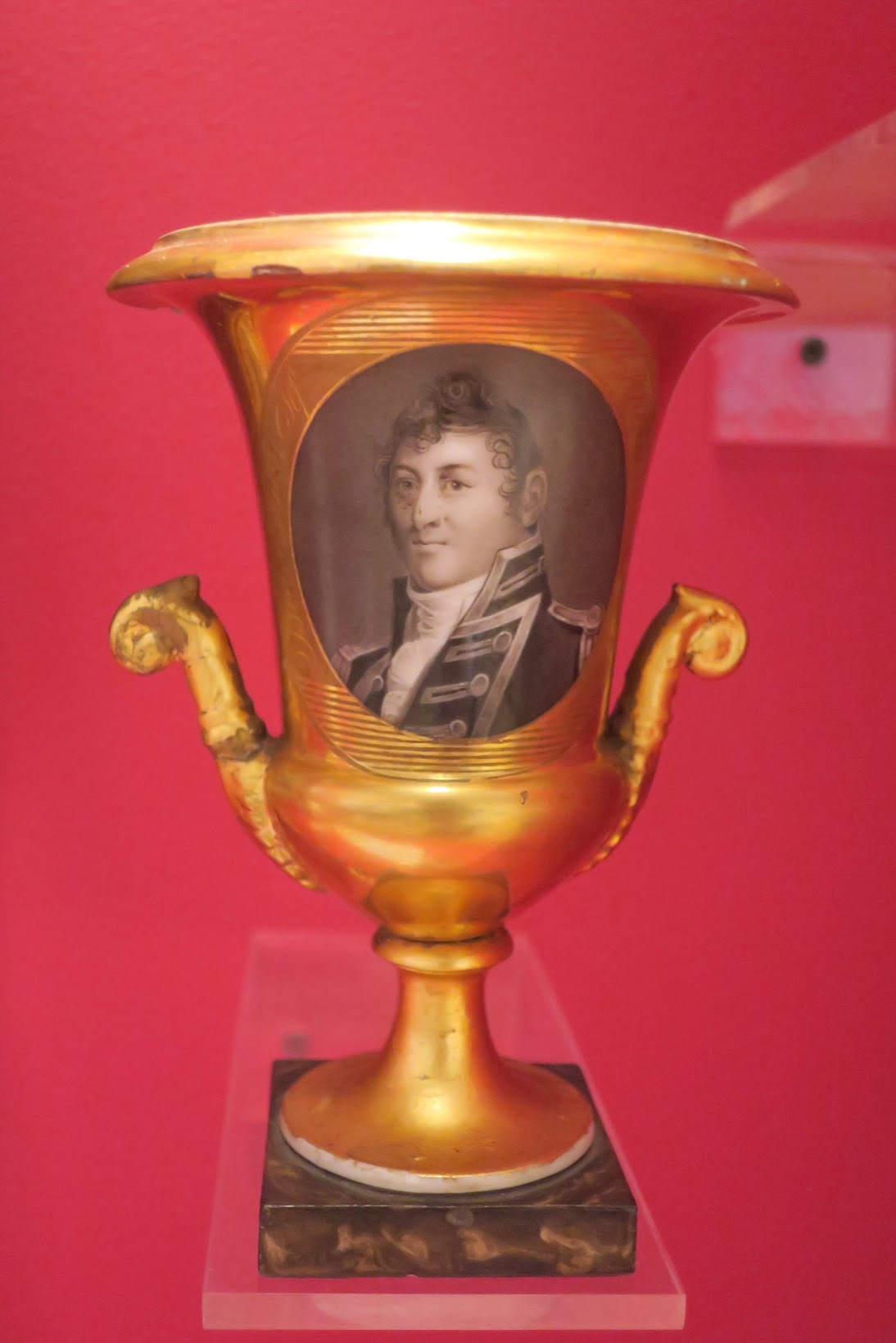


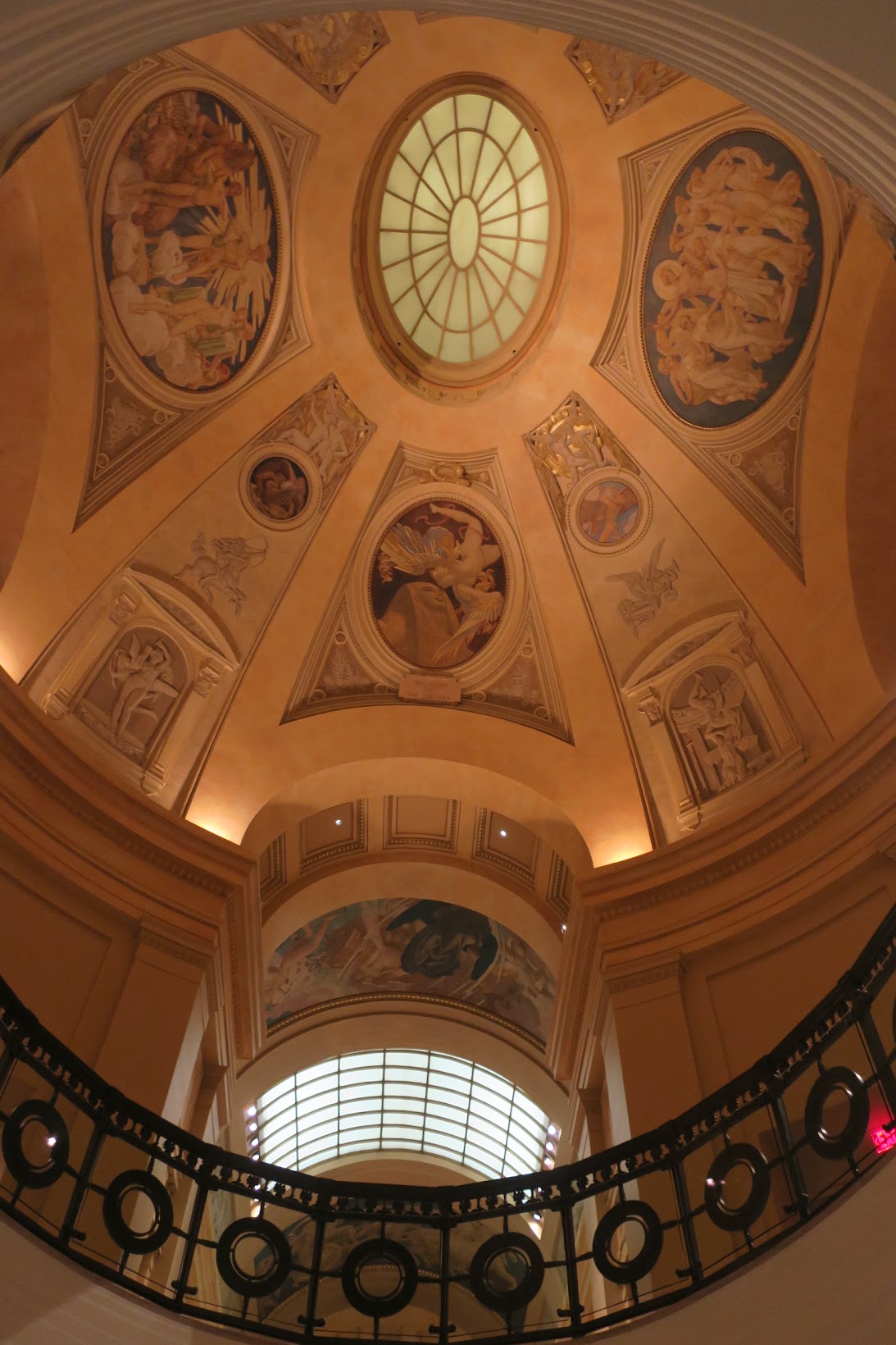




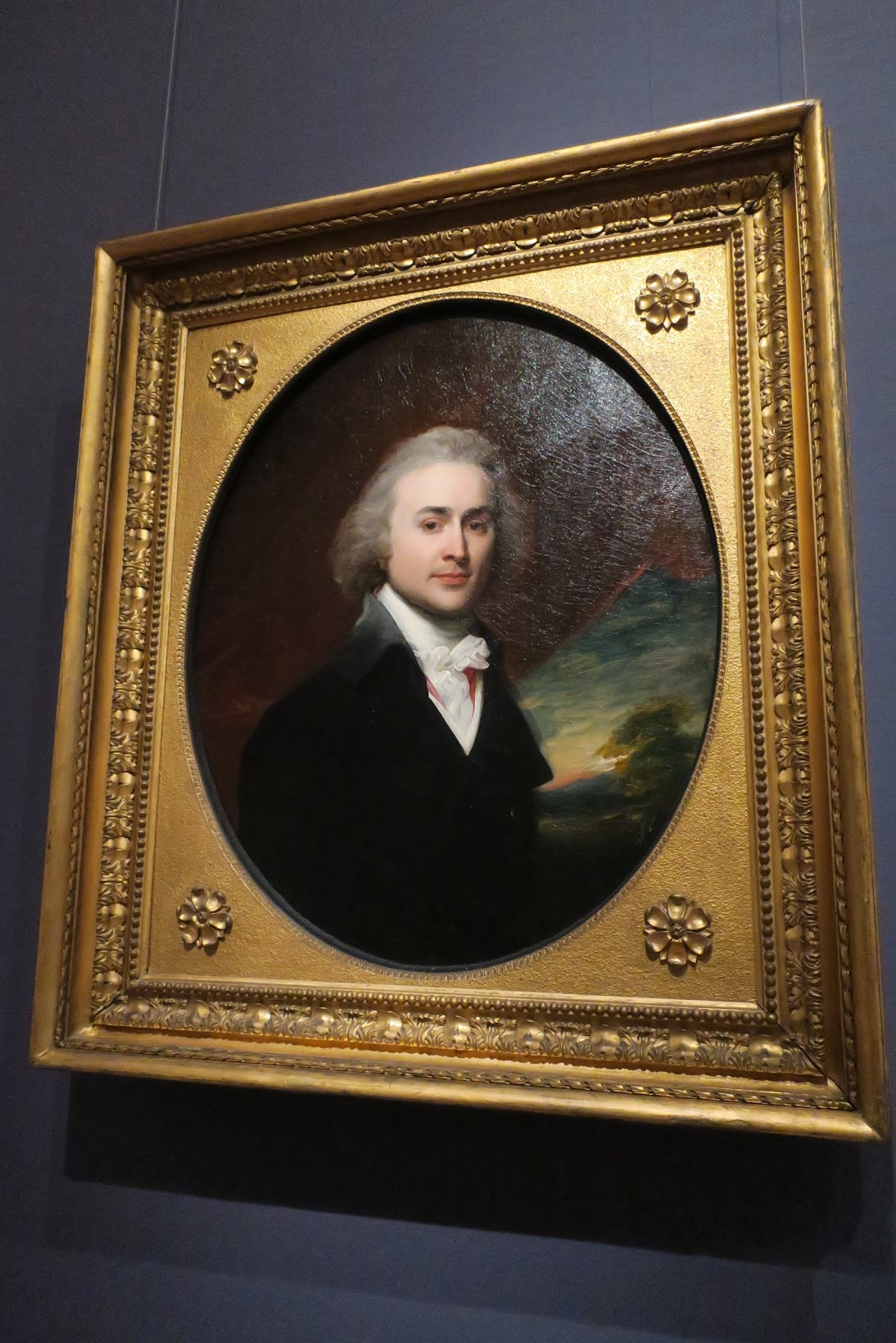


Hello CD, How fortunate you were to visit the Otis house, one of the gems of the Federal period. I have a book that belonged to Harrison Gray Otis, and must have been in the house when he lived there.
ReplyDeleteThe treasures of the MFA are beyond counting. It is too bad that you did not get to see the historic Musical Instruments (my old department there), but I admit that you packed enough into one day!
-Jim
Hello Jim,
DeleteThe Otis house was not the only historic house we visited on our journey East. I will write about those houses in future posts to be certain.
How fascinating to learn that you own one of Mr. Otis' books. When doing research for this post, I stumbled across another Harrison Gray Otis (1837 - 1917). This Mr. Otis was a book publisher.
Alas, we spent about seven hours at the MFA and did not get to see the musical instruments. Obviously, we are in need of a second visit, something I very much look forward to.
Hi again, My book is from 1834, and concerns Harvard, so it must be the Boston Harrison Gray Otis. I was looking on the internet, and it does not seem that the Los Angeles publisher Harrison Gray Otis was very closely related, although he had a distinguished career of his own, and he was born in Ohio!
Delete--Jim
Hello Jim,
DeleteWell, I had no idea the two were related, thank you.
I was doing my own ooohhhing and ahhhing when back at our Art Institute this Friday past and after my first viewing of the wonderful Gauguin Exhibition spent a nourishing hour in the American Gallery and the Copley's we have are also strikingly beautiful.
ReplyDeleteThe fine Watson and the Shark you highlight here did provoke research as I do recall seeing it but not at the MFA and also the prominence given the African sailor in such a heroic historical narrative had to be extremely unusual if not unprecedented.
Online research reveals that the National Gallery may own the original and another copy may also be at the Detroit Art Museum.
https://www.nga.gov/content/ngaweb/Collection/highlights/highlight46471.html
Mr. Copley seems to be everywhere. I too spotted a few of his works at the de Young Museum last week when I took Patience to see the Summer of Love exhibit (obviously Copley's marvelous portraits were hanging nowhere near the gaggle of psychedelic "art" thank goodness).
DeleteI had no idea the Watson and the Shark oil painting we viewed at the MFA was Copley's personal copy, the one he kept for himself after painting the original which, as you rightly state, is on view at the National Gallery. Obviously, I need to get myself over there one of these days. Thank you for the enlightening comment GSL.
Dear CD,
ReplyDeleteThank you for your second lovely tribute to our fair city.
The iconic Chihuly Icicle Tower was part of a special Chihuly exhibit in 2011. When the exhibit closed, the artist offered to sell the tower to the MFA. By then, the tower had become a beloved centerpiece of the Shapiro Courtyard so the museum appealed to its generous donors. The purchase price was raised and the tower was acquired in September 2011. Considering how difficult it would have been to disassemble the tower (each icicle is inserted onto a steel rod), I suspect both the artist and the museum staff were relieved to leave the icicle tower in situ.
Best,
KL Gaylin
Hello KL Gaylin,
DeleteI'm not sure why it took me so long to get there but your fair city is a true gem. I hope to visit it again one day.
Thank you for sharing the story of the Icicle Tower. I once saw a PBS program about Chihuly's work and I recall a segment where one of his pieces was being assembled. Not an easy task by any stretch of the imagination.
And fortunate ME---selfish ME---to spend the span of several cups in pursuit of all this lovely history!! Boston I have never seen, and your tour is a welcome window onto the past.
ReplyDeleteSo much of the story seems to point skyward---the buildings, spires, masts of that stately ship, even the graceful green plinth of tree and the lyre. And I was particularly caught by of all things the curtain-knob, for I have somewhere in a drawer all the yellow silk roping and tassels from all my Mother's guest-room drapes, green and gold as Miss Ellen's Po-TIERS.
What a happy occasion, and what a lovely thing that you got to tour all those wonderful quiet places. I can absolutely smell the odor of the past---all the leather and wood and hand-polished railings and chairs, with the gentle memory of grate-fires and brewing tea.
The view down the stairway captivated me for a moment, as four foyer chairs must somehow connote not guests or callers, but people patiently awaiting an audience with the great man who was owner of the house. Can't you just see them there, quietly conversing with their neighbors in that narrow space, each with hat literally in-hand in their laps as they wait.
I've just been lost in the history and that other time, and thank you for the glimpse of my own past which I've never gone to see.
Hope your weather is sunshine-down-the-stairs and 70s like ours today!!
rachel
PS---a new term---bough pot. I can see it on that mantel with cherry blossoms, though its demi-shape seems to call for more ballast to support the weight of the contents.
DeleteI'm also taken by the before and afters of the Otis building, and tried hard to make the photo match the same facade. Then finally, the pentimento of that tall door which touched the window in the photo, showing paler on the brick--that confirmed its heritage as a humbler place of commerce for a time.
Hello racheld,
DeleteI'm so pleased you enjoyed this very wordy post, which I considered breaking up into two parts (so they'd be three in total in this Boston series).
Boston is indeed a fine place for those of us who enjoy history but it is also a very current and thriving city full of treasures awaiting discovery. I hope you have the opportunity of visiting one day.
Also, I ams pleased that the photograph of the beautiful brass curtain tieback has reminded you of your own treasures which lurk within your drawers. Perhaps you'll be tempted to put those articles to use once again in your own house.
Oh, and as to your PS comment, yes, how pretty cherry blossoms would look in the bough pot although, as you say, support would be required (in the form of a flower frog), and far shorter branches in order to prevent the catastrophe of a tumbling mess.
DeleteIsn't the photo comparison of Otis House astonishing? I'm thrilled that Historic New England put it all back to right with their thorough restoration.
Oh, how splendid! We visited Concord and Salem on our drive home from the east coast but did not have time to visit Boston. It's one of my favourite places. Thank you for the vicarious tour!!
ReplyDeleteHello Jen Lawrence,
DeleteOh, you absolutely must make a point of visiting Boston. It is now one of my all-time favorite cities that I've had the privilege of visiting.
We spent a lovely afternoon on Concord on July 4 (how appropriate!), and then onto Salem on our last day of our trip. More on that in a later post.